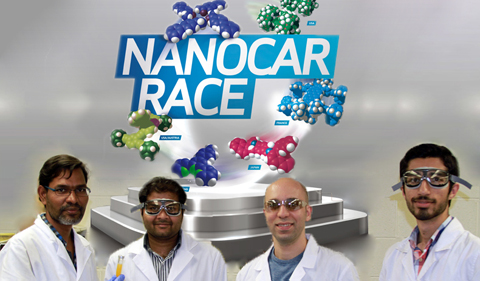
Nanocar participants Karthi Perumal, Kondalarao Kotturi, Mersad Raesi and Ramin Rabbani
by Kristin M. Distel
“Divide a meter one billion times, and that’s one nanometer. Our nanocar is four nanometers in length,” explained doctoral students Mersad Raeisi and Kondalarao Kotturi.
They are part of an Ohio University team that is working on a “nanocar” that will represent Ohio University at the Nanocar Grand Prix in Toulouse, France, in May 2017. Raeisi and Kotturi are third-year doctoral students in the Chemistry & Biochemistry Department.
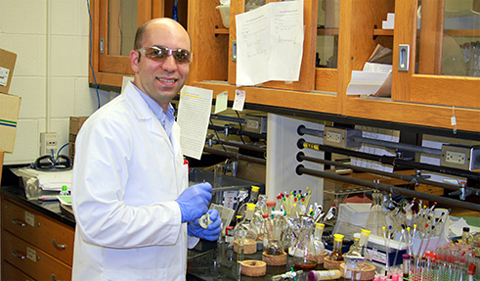
Mersad Raesi
Raeisi and Kotturi, both working in the group of Dr. Eric Masson, have been working on the nanocar since January 2016. They constitute half of OHIO’s nanocar design team, with post-doctorate fellow Dr. Karthikeyan Perumal, and graduate student Ramin Rabbani, also from the Masson group, being the other two chemists involved in the synthesis of the car.
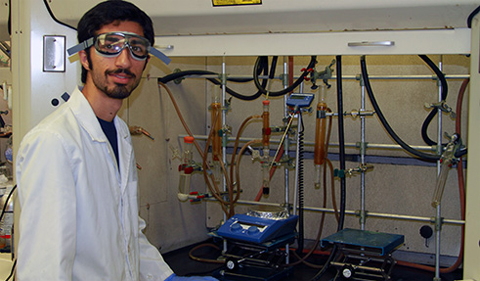
Ramin Rabbani
The car is now undergoing test drives by Dr. Saw Wai Hla and his students in the Physics & Astronomy Department. Ryan Tumbleson describes driving the nanocar during his internship.
The OHIO team has named their car the “Nanobobcat.”
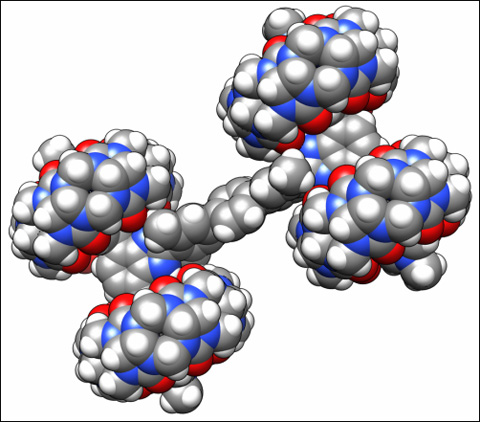
Graduate Students Mersad Raeisi and Rao Kotturi are currently at work on the Nanobobcat, designed by Dr. Eric Masson
‘It’s Really a Miniature Car’
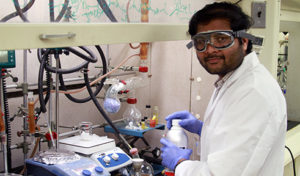
Rao Kotturi, one of the graduate students working on OHIO’s Nanobobcat
Despite its incredibly small size, the Nanobobcat bears many features of a standard automobile.
“It’s really a miniature car,” says Raeisi. “It has four wheels, axles, and a chassis. One of the real differences between it and an actual car is its molecular size, of course.”
The guidelines for the race state that the car must consist of at least 100 atoms in order to be eligible for the competition. OHIO’s car, Raeisi explains, consists of around 650 atoms. The additional size allows the team to include more realistic and detailed features. The majority of the atoms are found in the wheels, according to the researchers.
The wheels are part of what makes the Nanobobcat so unique. While most nanocars’ wheels slide on the surface of the racetrack, the wheels of the Nanobobcat actually rotate. This inventiveness will certainly help OHIO’s team stand out in the Nanocar Grand Prix this fall.
Race in Toulouse, France
Five other teams will compete in the Nanocar Grand Prix, which takes place on Oct. 14 and 15. Along with a group from Rice University, OHIO’s team is one of only two teams from the United States participating in the race. Other teams hail from France, Austria, Germany, Japan, and Switzerland.
The race itself will take two days and two nights to complete, and the track is incredibly small—just a few nanometers in length on a gold surface. The cars will be propelled by small electric shocks using a scanning tunneling microscope (STM). Rather than moving in a straight line, each team’s car must navigate through a series of “traffic cones.”

The racetrack on which the Nanobobcat will compete in Toulouse, France
Challenging and Successful Research
The team’s research and tests have already proved quite promising.
“While optimizing the synthesis of the Nanocar, we also made a ‘Nano Hoverboard’ that has only two wheels,” Kotturi says. “Wheels are Cucurbituril macrocycles in our case. Professor Hla’s group, the driving team, tested the Nano Hoverboard on the gold surface using STM, and it is running well. This is an encouraging result for our Nanocar race.”
Raeisi and Kotturi have been working side-by-side from the project’s earliest stages. “Once Prof. Masson gave us the schematic for the car,” Raeisi notes, “we started to work right away.” Their joint tasks have involved the tedious synthesis of the chassis, and controlling the auto-assembling of the wheels.
“Our car is in the shape of an ‘H,’ where the middle of the ‘H’ is the shaft. Assembling the shafts and the axles has been particularly challenging, but we succeeded!” Raeisi says.
Raeisi and Kotturi’s work with the nanocar and molecular technology could have broader implications. Kotturi notes that the OHIO team is tracking the movement of a single molecule on a surface, a fascinating mechanism at the atomic scale that has not revealed all its secrets. Raeisi explains that material and information transportation at the molecular level is currently of enormous interest in the scientific community, as is the conversion of chemical and electrical energy into molecular motion.



















Comments